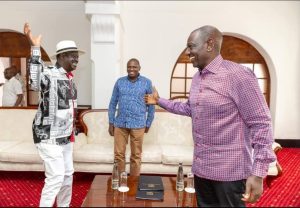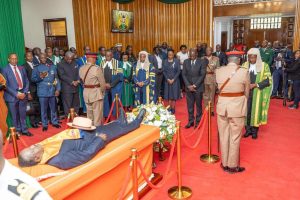Opinion
The Enigma’s Final Act: How Raila Odinga Orchestrated His Own Succession
Raila had quietly placed the Luo community under the political protection of President Ruto. This was not surrender but strategy, a lesson drawn from Kenya’s political history.
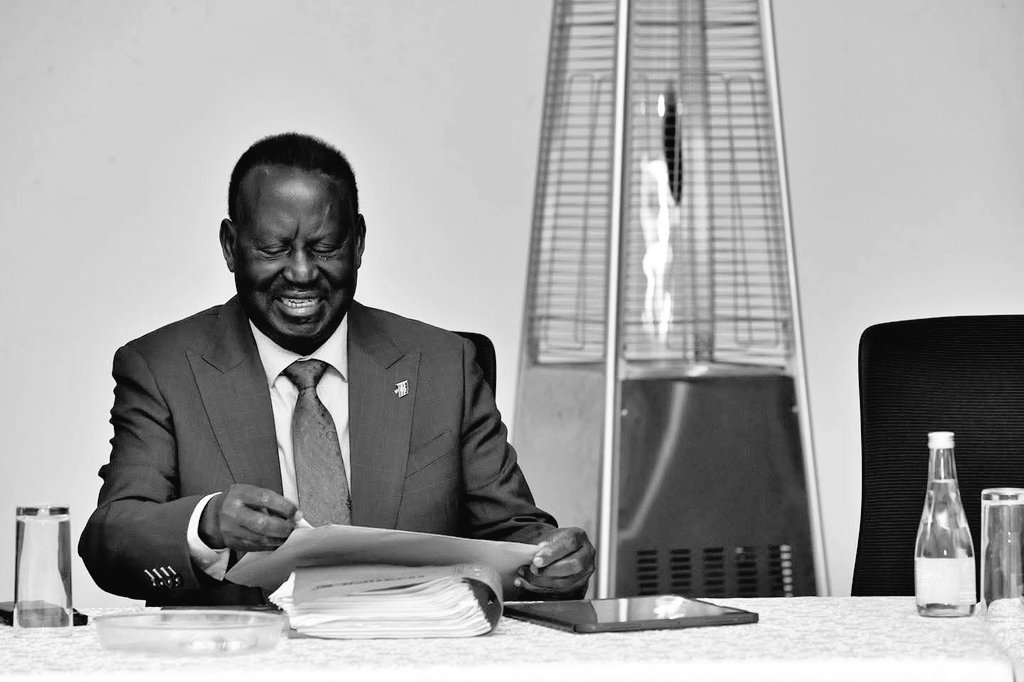
A master strategist to the end, Kenya’s opposition stalwart spent his final years quietly arranging the political furniture for a community that had followed him through five decades of struggle
The signs were always there, hidden in plain sight like clues in a detective novel that only make sense when you reach the final page.
When Raila Amollo Odinga breathed his last in an Indian hospital on the morning of October 15, 2025, those who had watched him closely over the preceding two years realized they had been witnessing something extraordinary: a political titan preparing for his own exit with the same meticulous care he had brought to five presidential campaigns.
At 80, Raila had lived what Africans call a full life, the kind that earns a man the right to be called an elder without irony.
But unlike many leaders who cling to relevance until their final breath, Raila seemed to understand that his greatest service to the Luo community might be ensuring they would not be orphaned by his death.
The question that has consumed political analysts since his passing is not whether he knew his time was coming, but rather how deliberately he prepared for it.
Consider the sequence of events. In early 2025, Raila threw himself into the Piny Luo Festival in Siaya with an enthusiasm that surprised even his closest allies.
This was no ordinary cultural gathering.
Representatives came from South Sudan, Ethiopia, the Democratic Republic of Congo, Uganda, Kenya and Tanzania, all united by the Dholuo language that had scattered across East Africa over centuries of migration.
Raila was installed as the titular head of this transnational community, and witnesses say his excitement was palpable, almost childlike.
For a man who had spent decades in the hard-nosed world of Kenyan politics, this sudden embrace of cultural ceremony seemed anomalous. But viewed through the lens of what came after, it takes on new meaning.
Raila was claiming his place in history not just as a politician but as a custodian of his people, ensuring that the Luo would remain united even as his own chapter closed.
The more dramatic shift came in his political posture.
After a lifetime of confrontation with the establishment, after detention without trial, after elections he believed were stolen from him, after the 2007 violence that nearly tore Kenya apart, Raila suddenly became an apostle of reconciliation.
He extended hands to Uhuru Kenyatta and William Ruto, men who had been his bitterest rivals.
He accepted positions in government that his supporters viewed as capitulation. He became, in his twilight years, a peacemaker.
When the Gen Z protests of June 2024 threatened to topple President Ruto’s government, it was Raila who stepped in to calm the waters.
Young people who had idolized him for his fighting spirit were bewildered.
Why was their champion now counseling patience and dialogue? Why was he, of all people, telling them to trust constitutional processes? The backlash was fierce.
Social media exploded with accusations of betrayal. The hashtag that had once celebrated him now turned on him with venom.
But Raila held firm, insisting that Kenya had mature democratic structures capable of addressing political grievances without descending into chaos.
For those who had lived through the destruction of 2007 and 2008, his position made sense. For younger Kenyans who had not experienced that trauma, it looked like surrender.
Political analysts now suggest something more profound was at work.
After spending decades fighting to build democratic institutions in Kenya, Raila could not countenance leaving those institutions in ruins.
He had broken the rules of dictatorship, expanded democratic space, and midwifed a new constitution. To let Kenya burn as he departed would have negated everything he had fought for.
The shrewdest move, however, was one that only became apparent after his death.
Raila had quietly placed the Luo community under the political protection of President Ruto. This was not surrender but strategy, a lesson drawn from Kenya’s political history.
When Jomo Kenyatta died in 1978, the Kikuyu community found itself under the guardianship of Daniel arap Moi, who had become president against the wishes of powerful figures in Kenyatta’s inner circle.
Moi became their foster political parent until he could hand them back to one of their own, Mwai Kibaki, who in turn prepared the way for Uhuru Kenyatta. When Moi’s own tenure ended in controversy in 2002, the Kalenjin faced hostility as collateral damage for his excesses.
It was Raila who took them under his wing, protecting them politically until William Ruto emerged as their natural leader.
Now the cycle completes itself.
The Luo, who have never tasted the presidency despite Raila’s five attempts, find themselves tucked under Ruto’s political umbrella. This arrangement serves multiple purposes.
It prevents the community from fragmenting into rival factions in the power vacuum left by Raila’s death. It ensures they retain political relevance at the national level. And it buys time for organic leadership to emerge from within.
Those hoping to harvest Luo votes for the 2027 elections may find themselves disappointed. The community that followed Raila through decades of struggle is unlikely to scatter at the first opportunity.
More probably, they will remain in their current political home until a new leader emerges naturally, someone with the stature to claim Raila’s mantle without the artifice of appointment.
In his final two years, Raila handled the subjects of death and the afterlife with what observers described as admirable stoicism.
He spoke of ancestors and legacy with the ease of a man who had made peace with mortality. He put his entrepreneurial affairs in order, his vast interests in oil and gas, hospitality, real estate and farming distributed according to plans he had laid carefully.
This was not the behavior of a man caught off guard by death. This was the behavior of someone who had received what Africans call the signs, the intimations from nature that a man’s time on earth is drawing to a close.
In traditional African thought, respected elders are granted this foreknowledge so they can arrange their affairs and ease the transition for those they leave behind.
Whether Raila received such signs, or whether he simply read the state of his health with clear eyes, the effect was the same. He took control of his narrative one final time.
The man who had been Kenya’s perennial opposition leader spent his last act becoming its statesman, the father figure who could put the nation’s interests above his own ambitions.
His critics have called this final transformation a betrayal, a capitulation to the forces he had spent a lifetime fighting.
His defenders see something nobler: a leader who loved his country more than he loved the fight, who understood that his legacy would be measured not by the elections he won but by the democracy he helped to build and the people he left behind in capable hands.
Raila Amollo Odinga, called Agwambo, the enigma, has exited the stage. But unlike actors who simply disappear when the curtain falls, he has left detailed stage directions for those who remain.
Whether they follow his script remains to be seen, but they cannot say he left them unprepared. In death as in life, Raila made sure he had the last word.
Kenya Insights allows guest blogging, if you want to be published on Kenya’s most authoritative and accurate blog, have an expose, news TIPS, story angles, human interest stories, drop us an email on [email protected] or via Telegram
-
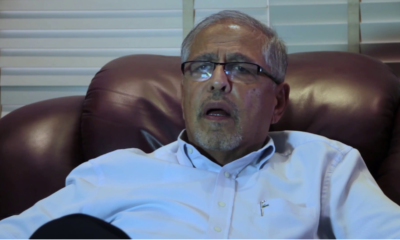
 News4 days ago
News4 days agoTemporary Reprieve As Mohamed Jaffer Wins Mombasa Land Compensation Despite Losing LPG Monopoly and Bitter Fallout With Johos
-

 Business2 weeks ago
Business2 weeks agoPanic As Payless Africa Freezes With Billions of Customers Cash After Costly Jambopay Blunder
-
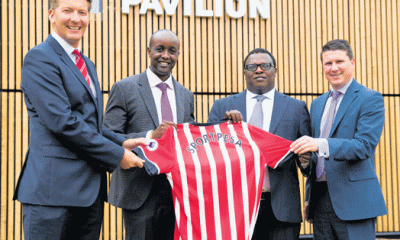
 Investigations1 week ago
Investigations1 week agoHow SportPesa Outfoxed Paul Ndung’u Of His Stakes With A Wrong Address Letter
-
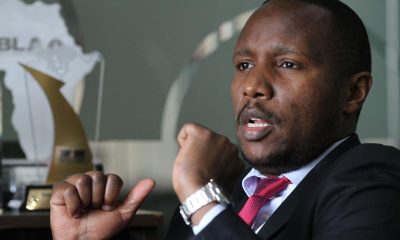
 Investigations4 days ago
Investigations4 days agoFrom Daily Bribes to Billions Frozen: The Jambopay Empire Crumbles as CEO Danson Muchemi’s Scandal-Plagued Past Catches Up
-

 Sports3 days ago
Sports3 days ago1Win Games 2025: Ultimate Overview of Popular Casino, Sports & Live Games
-

 News2 weeks ago
News2 weeks agoSCANDAL: Cocoa Luxury Resort Manager Returns to Post After Alleged Sh28 Million Bribe Clears Sexual Harassment and Racism Claims
-

 Investigations1 week ago
Investigations1 week agoInside the Deadly CBD Chase That Left Two Suspects Down After Targeting Equity Bank Customer Amid Insider Leak Fears
-

 Business4 days ago
Business4 days agoHass Petroleum Empire Faces Collapse as Court Greenlights KSh 1.2 Billion Property Auction

